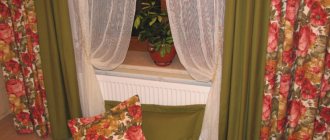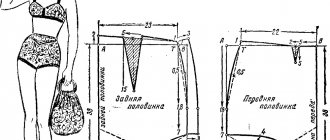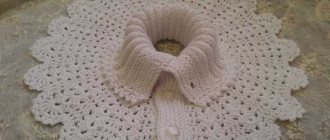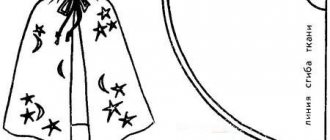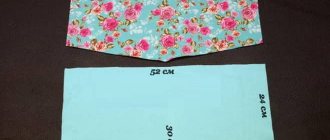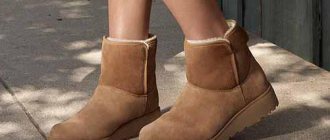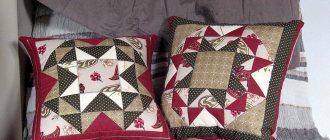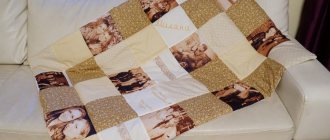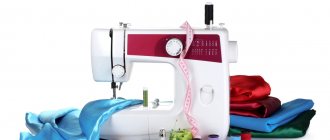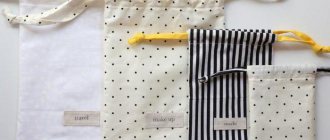In a modern, beautiful kitchen, everything should be perfect, clean and tidy, from the interior to such a small thing as oven mitts for hot utensils. They just wash very poorly, and therefore there should be enough of them in the house to easily replace them.
Sewing a cute little thing is not difficult. In addition, unique potholders made personally are a wonderful gift.
Patterns and manufacturing diagrams
The main task is to come up with and implement the design of the future craft. Not only beautiful textile remnants are suitable for this purpose, but also various shapes - circles, hearts, squares, mittens, pumpkins, butterflies.
The sizes of the product vary depending on functionality, so it is preferable to make a solid set for all occasions: several circles or squares, a mitten, decorative cute things that lift your spirits.
To sew a mitten, prepare a pattern of the required size in advance so that after finishing the work your hand can fit freely inside. For square and round crafts, pieces of canvas measuring 20x20 cm (or others according to your desire and taste) are suitable. A strip of fabric for the loop is required - 8x12 cm.
When making potholders, it is important to accurately select textiles and heat insulators in order to protect your hands from burns. The right solution would be to use natural materials - linen, poplin, chintz, soft flannel.
As an internal heat insulator, you can use synthetic winterizer, batting or an old terry cloth. When sewing a textile item, it is necessary to leave 6-10 mm on the seam.
Knitted potholders
Kitchen items are easy to knit using knitting needles or a crochet hook - the process will take literally a couple of hours. The product is knitted from the center or from the edge, in even rows, it can be decorated with braids, arans, lush columns, etc. But any openwork knitting options are unacceptable - the potholder must fully perform its functions, protecting your hands from burns. All knitted potholders are sewn to a piece of felt or made two-layer - then a padding polyester is inserted into the middle.
Round, square - simple knitting patterns
The easiest way to make a potholder with a crochet hook is in the form of a circle or square. The square “grabber” is crocheted from the middle, adding four loops where the corners should be. In total, you will need to knit at least 10-12 rows with single crochets. The last row is done in a different color; a loop is sewn to one corner. It’s easy to make a thing multi-colored by changing the thread at the beginning of each row, using yarn with a gradient transition from one color to another.
A square is sometimes knitted from a corner - a chain of 20-30 loops is made, knitted with single crochets, and at the end of each row the knitting must be turned. At the end there is an edging, a loop. The square is knitted with knitting needles from the corner diagonally. Round and polygonal items are also crocheted from the center - increases are made evenly to get the desired shape.
If you attach a black “tail” and a green leaf to a simple round model, you get an apple or a cherry. White “sectors” are knitted on it - a lemon or orange circle comes out.
Watermelon slices, strawberries - “berry” potholders
“Delicious” things depicting fruits are the most beautiful idea for the kitchen. How to crochet a watermelon potholder step by step:
- you will need red, dark green, white, black threads, a hook of appropriate thickness;
- knitting is done in the round - the first five to seven rows are made with double crochets and red thread;
- then one row of white color is knitted;
- the next two rows are done in green;
- the circle is folded in half, a padding polyester is inserted inside, the product is connected with a black edging row, and a loop is made;
- For believability, watermelon seeds are embroidered in black on a red background.
The “strawberry” potholder is crocheted, starting with the loop from which it will be hung. It will also be two-layer with thick felt in the middle. Knitting starts with green, then red is added, a “berry” is knitted, which can be decorated with white embroidered seeds. Almost in the same way, but having selected suitable threads, they knit raspberries, blackberries, a bunch of grapes, etc.
Bright knitted sunflower
To make a ripe sunflower flower you will need yellow, green, and black threads. The product will also be two-layer, with felt in the middle. Knitting is done by crocheting from the middle, with black yarn, and single crochet. After seven to nine rows are knitted, one row is worked in yellow. The petals are knitted like this: a chain of seven air loops is woven, after which seven single crochets are knitted on the same chain, then one stitch to the base, then the next petal is knitted. The back of the potholder is made completely green or yellow-green.
Cockerel potholder
A bright, multi-colored rooster potholder will become an original decorative element of kitchen decor in the Provence style. Knitting here is also done with double crochets and crochet in the round, but only two or three initial rows are made “full”. Afterwards, a loop is knitted on the “back” of the future bird, and the next rows are made open.
When another five to six rows are made, five lush double crochets are knitted in every third loop with a contrasting thread, which alternate with single crochets. On one of the “tops” of the broken circle, a bird’s head is knitted, which is decorated with a red comb of lush double crochets. A wing is knitted from the center of the product - preferably also contrasting, then the tail is finished with another row of fluffy columns.
The cockerel can also be double-sided - then two symmetrical parts are needed. A one-sided product is usually made textured, decorated with voluminous knitted details.
Other manually linked options
Experienced craftswomen invent many other interesting potholders:
- ladybug - knitted from black and red threads, black dots on the back, head with a loop, contours, you can sew button eyes;
- heart - usually made in red tones, decorated with lace of a contrasting color along the contour, with a long loop on top;
- pig - a large knitted circle here will become the body, a small one will become the nose, two triangles hanging from the top will be the ears, you also need small legs, eyes, and a tail-loop;
- mitten - knitted or crocheted, should be freely put on and removed from the hand, the loop is attached in the cuff area;
- lamb - has wavy edges, a voluminous muzzle with ears, horns is knitted in the middle, four legs and a tail-loop are also made;
- fungus - a red or brown cap is knitted, a white leg, grass at the bottom, a loop at the top;
- owl - usually made in the form of an oval, on which two round eyes are tied, paws with claws, wings, and a loop are attached to the head;
- an asterisk, a sun, a month - made in the appropriate shape, decorated with funny faces;
- scrambled eggs - made slightly asymmetrical for greater plausibility, you will need yellow, white, brown threads;
- shorts - crocheted, the contours of the pockets, the flies are sewn with a contrasting thread, a button is sewn in the middle on top, a loop is sewn in the corner;
- fish - consists of a head, tail, fins, eyes, if desired, scales are embroidered on it, the tail is worked on, a loop is attached to the tail or head.
How to sew potholders from fabric
When starting the creative process of making a kitchen accessory, remember a few rules:
- Choose a fabric that is easy to sweep away but does not fray.
- Do not use flammable synthetic materials. Hot objects can set the item on fire if it comes into contact with an electric or gas stove if handled carelessly.
- When starting to cut, wash and iron the scraps. This must be done to prevent large shrinkage of the finished product, and also to check the strength of the coloring. If the fabric fades, it is better not to use it.
- Use adhesive interlining to adhere the layers together.
- For convenient storage of potholders, make a loop.
The process of making crafts begins with cutting out 2 parts each from a beautiful soft fabric. Then two non-woven and synthetic padding layers, made according to the same pattern. Next, we form a kind of puff “sandwich”:
- heat insulator - padding polyester or batting;
- interlining;
- two face layers facing each other;
- interlining.
You can do without adhesive material. We sew the resulting set on three sides, turn it right side out, insert a loop and sew up the remaining part.
You can arrange the craft so that the parts are only visible, and the batting is inside. Then you should trim the item with bias tape.
It will look very nice if you quilt the potholder.
Knitted potholders
Cute crocheted items turn out to be very original. Even the simplest weaving can make a lasting impression. However, three-dimensional schemes should be avoided, since using such devices will be inconvenient.
The process of creating attractive accessories will not take much time. For the simplest options, two hours is enough.
It’s a good idea to attach the knitted part to the lining and put a sealant inside. Otherwise, such devices serve only as interior decoration.
Let's look at the most available options:
- a modest square - just make a chain of the required length and build rows on it, alternating the colors of the yarn. Next, we will tie the resulting quadrangle in a curly row;
- motley ring - take a braid of 5-7 links, loop it and continue to weave, changing the threads;
- watermelon slices - we knit a circle, changing the threads on the crust, and then we fold the fabric in half, edging it along the edge, and embroidering black grains.
Knitting needles are also perfect for this craft.
From felt
The uniqueness of the material is that it does not crumble. By simply cutting out the basic shape, you can make any applique without finishing the edges. Pressed wool holds its shape perfectly. Bright yarn is suitable as decorative stitching; you can use beads and braid.
Patchwork technique
In this case, you need to have a lot of patience and a lot of practice. But the product comes out amazing! Potholders look impressive, but when you start sewing, learn the techniques for attaching scraps:
- standard blocks - you need to cut out the squares and stitch them on an overlocker;
- sewing according to a pattern - pieces are cut out according to blanks. These can be leaves, hearts, geometric figures;
- it is advisable to cut parts into crafts using a grain of thread to avoid deformation of the finished version;
- You need to sew on the base - here the particles are simply attached to the prepared substrate.
To make a simple product, we take three matching colors of fabric and the necessary sewing kit. We prepare fabric squares 10x10 cm, cut them into triangles and lay them out according to plan. We sew all the elements together - we get one piece.
We do the next half in the same way. Between them we lay batting or padding polyester. We process the edges with a finishing edging, attaching a loop.
From jeans
A very non-trivial option. The creation process is so simple that even a student can cope with the task.
Natural fabric in two layers is quite dense, so it does not allow elevated temperatures to pass through.
We take old jeans, cut out chic pockets with allowances for processing. We lay adhesive interlining between them and attach them to each other.
You can make a cute little pot holder out of old pants or a skirt without a sewing machine. Cut out 3-4 squares, pull out the threads along the edges, forming a soft fringe. We sew the blanks with any bright decorative stitch.
How to sew your own unique oven mitt with your own hands?
Potholders in the shape of birds look very cute and funny. At first glance, they may seem very difficult to you, but do not be afraid! You know the saying: the eyes are afraid, but the hands do the work? So, if you follow the instructions, then everything will work out wonderfully. To begin, select fabric from the store that will match the plumage of the bird you have chosen. Of course, you don’t have to follow the standards, because you can make an unusual bird of paradise? Do whatever you please.
- Once you have purchased the necessary materials to sew your potholder and prepared the work area, think about your birdie more carefully.
- Carefully, using available materials, draw two identical circles on the fabric and carefully cut with scissors.
- Now take the lining material and cut out the exact same circle from it. It will protect you from high temperatures and burns.
- Place these three pieces together and carefully stitch along the outline.
- If you have decided what kind of bird you will have, then you probably know what wings it will have. Cut out two parts for the wings, don’t be afraid to get creative.
- We fold the elements in half and sew them to the circle that you have already sewn. Carefully observe the cuts and that there are gaps.
- Separately, cut out a piece for your bird's head. And then stitch to the circle.
- Sew on additional materials: beaks, eyes, combs, tails and whatever your imagination allows.
Now that you know the easiest way to sew your own oven mitt, it's time to start getting creative and decorating your kitchen with lots of nice little details. Remember to wash and replace your oven mitts so they will last longer. Of course, if you have difficulties implementing your idea, it makes sense to turn to professional needlewomen.
Source
Owl potholder
For the craft you will need textiles in three colors, a sealant, edging, and a sewing kit.
We mark the templates on the material. Cut out the resulting elements:
- wings – 4 fabric, 2 padding polyester parts;
- 2 dark and light eye parts from a dense piece;
- body – 2 pieces of fabric, 1 gasket;
- beak – 1 piece.
Let's start making:
- We assemble the body patterns with the front surface facing each other, adding a seal. We attach the beak. Having fixed the layers, we attach it on both sides. We sew all parts of the material together.
- Add light elements of the eyes and stitch around the circumference. We chop off the dark elements and attach them.
- We fold the fabric patterns of the wings inside out, laying layers of sealant. We make a decorative seam in the middle. We trim the edges of the wings with edging.
- We collect the owl. We attach the edging to the wrong side of the craft, leaving the upper area. We unfold the trim to the front side and grind it.
- Cut off 30cm of the edging and mark the half. Aligning this point with the center of the open edge, sew on the piping. We turn it away.
- Then we process the rest of the figure.
- We form the ends of the edging into loops - ears and attach them to the body.
Square potholder in patchwork style
When creating potholders with your own hands from fabric with patchwork-style patterns, you can use fabrics of various shades. It all depends on what colors predominate in the kitchen. If it is beige, caramel or gray, then pastel colors are used. However, brighter options are also appropriate and are often used. Especially in an ensemble of a decorative element, such as a painting or a vase.
The materials are simple:
- 2 pieces of linen fabric 24*24 cm.
- 24 strips of the same fabric 2.5*24 cm.
- 2 pieces of wool or cotton batting 24*24 cm.
- Take the borders 25cm (so that it matches the main fabric). You can also make it yourself.
- And, of course, scissors, needles, iron, thread, sewing machine - all available tools.
Linen fabric is placed under the batting, and stripes are placed on top, which will need to be sewn to the batting. Two strips are applied to each other, folded in the center of the main part, and sewn on one side. The top strip will subsequently need to be folded back and the seam ironed.
Important! The stripes should “look” at the seamstress.
Then another strip is taken, placed on top of the ironed one and sewn on according to the same principle, and at the end it is turned away and ironed. As a result, the part should be completely covered with stripes. The second main fabric of the same type should be treated in the same way. Then a border is sewn onto these strips. The raw edge of the border must be connected to the raw edge of the potholder. First, from one corner it is sewn to one side of the clamp, and before each new corner the border is bent by 24 degrees. The result is that it is stitched around the entire perimeter.
At the end, it is worth returning to the starting corner and bending the border to the front side. Then, pinning it with pins, the tip becomes a “loop” and the rest is tucked inside.
You might be interested in: Rules for sewing sequins onto fabric yourself
The finishing touch is to sew the border to the front part.
In fact, in practice, you only need to try it once - and the patchwork style will seem the simplest of all.
Bell
Amazing caps are perfect for a teapot when brewing herbal tea or tea.
You will need textiles in two colors, lining and heat-insulating fabric, and a sewing kit:
- We cut out the blanks, leaving an allowance of up to 5 mm. We attach the sepals with a zigzag seam, arrange all the layers, and make a stitch.
- We mark the top of the bell, from which we draw a circle with a compass. We trim the excess fabric evenly in a circle. We trim the cuts.
- We bend the cap in half, not forgetting the loop. We sew the edges.
- We turn out a funny bell.
Butterfly
To the standard sewing kit we add textiles in summer colors that match each other, lining, bias tape, decorations - beads, rhinestones, buttons, braid:
- We take fabric for the base, padding polyester, and cut out 2 pieces of the body and 4 pieces of wings according to the template.
- We reinforce the upper part of the wings with adhesive interlining or padding polyester. Having arranged them with the front surface, we stitch along the inner edge. Turn it inside out and grind along the cut.
- We fold the main blanks with decorative sides and secure them with hairpins. We prepare antennae from braid and attach them. We cut the seal at the base of the wings, turn it inside out and quilt the body.
- For the pattern, we cut out teardrop-shaped and round parts. Sew by hand.
- We attach decorations and perform finishing hand stitches.
- Assembling the wings and body. We trim the figure with binding and sew on a loop.
Cake
We use a universal sewing kit, textiles in two colors, synthetic padding, decorations - ribbon, button:
- Let's draw a template for half a cupcake and cut it out from the main and interfacing fabric.
- Quilt unfolded with vertical stitches. We bend it in half. Sew around the perimeter, leaving a small section.
- We turn it right side out and stitch it, making an indentation from the edge of 2-3 mm.
- Cut out two parts for the hat. Having arranged them with the right sides, we sew them on. Turn it inside out and stitch around the perimeter.
- We fasten both parts using a sewing machine or by hand. We decorate the delicious cupcake with a bow and a cute button.
Woven fabric potholders
Potholders are easy to weave from narrow strips of colored fabric. For work, textile materials are used that are similar in texture, but different in color. For example, take two squares measuring 25 by 25 cm, cut them without reaching the edge one or two centimeters, this is done straight or in the form of wavy lines. The second option is more interesting, since the finished product is a beautiful abstraction. Weaving is done like regular plain weaving.
Next, a square with a side of 25 cm is cut out of batting or padding polyester, and a piece of dense fabric of a size sufficient to decorate the product with an edging of the front part is cut out. The finished “pie” is sent for processing using a sewing machine - all sections are stitched with a zigzag pattern; it is better to use a contrasting thread. At the very end, a loop made of bias tape is sewn to the product. To ensure that the structure holds its shape well, it is also advisable to sew its outer contour on a typewriter.
Heart
To the sewing kit we add textiles with a “heart” or other interesting pattern in two colors, plain and interlining fabric, a cute button:
- We apply the pattern of a large heart to the multi-colored material folded in half. By analogy, we cut out the following blanks from insulation and plain fabric.
- We form the layers with the wrong side facing each other, laying padding polyester between them.
- Using another template, we cut out small half-hearts from both types of fabric. Folding them inside out, we get two pairs, each of which we chop off with needles. We trim the straight edges with piping.
- We fasten all the parts and secure them with hairpins.
- We trim around the perimeter with edging, leaving a small section in the center. Here we will sew a loop and a decorative button.
Options for using oven mitts for the kitchen
The main and main purpose is to protect your hands while cooking. But its possibilities are wider: home decor, implementation of creative ideas, teaching sewing skills to small children, gifts.
Potholders made using the patchwork technique are an excellent souvenir that you won’t be ashamed to give to colleagues, friends and relatives for any occasion. A New Year's potholder can be sewn from fabric with a themed print or in the shape of a Christmas tree, snowman, or symbol of the year.
Making potholders with your own hands is a creative process that brings pleasure, and, importantly, can distract us and our children from endless sitting in front of gadgets. Perhaps the first potholder you made yourself will be a step towards diversifying or completely changing the interior of your kitchen.
Fruits
Bright, attractive potholders in the shape of fruits will not only decorate the kitchen, but will also remind you of a warm, sunny summer throughout the cold winter.
Let's consider the technology for making crafts in the shape of an apple. First of all, let's draw a template on paper:
- We cut out parts from any plain fabric 1.5-2 cm larger than the drawing. We will sew patches onto it.
- Pin a small square 3x3 cm in the center. Take scraps of bright yellow, red or green color, sew them in a circle, bending them one by one until we fill the entire surface. It is advisable to immediately iron the results of the work, or draw them with a ruler.
- We assemble the craft - at the bottom there is a lining with the right side facing down, then a synthetic padding, and on top is our beautiful, ironed part.
- We fix the resulting “sandwich” with pins, quilt a little along the seams, and trim off the excess.
- Attach the loop to the back of the potholder.
- We process the resulting kitchen accessory with edging.
- Cut out a leaf from green thick wool and sew it onto a button.
Our sunny apple is ready!
Schemes and patterns
Do-it-yourself potholders from scraps: patterns can be found on cutting and sewing websites. As a rule, such resources always have diagrams for interesting mitten models, easy and original technologies for creating beautiful mittens or napkins for the kitchen. Beginner seamstresses are offered master classes and step-by-step instructions to sew a mitten according to the correct pattern.
Additional Information! You can involve schoolchildren in such an activity. This will become a favorite thing for them later. Every girl will enjoy sewing small patches and learning the patchwork technique when creating unusual crafts, which may well be useful in craft lessons.
Before you start sewing a potholder, you need to make a pattern. There is no need to create any complex structures. The pattern will be old mittens or ready-made patterns from the Internet. You can draw a square or a circle yourself.
Important! The material must be washed, dried and ironed before sewing.
The design is transferred to the fabric and carefully drawn. There should be two parts of the main fabric and filler. Thus, there are four main elements in total. They should be the same and with an additional allowance of 0.7-1 mm at the edges for allowances!
Variegated "Ring"
There is nothing complicated about how to sew a variegated potholder. It is enough to prepare the material and transfer the pattern to the fabric. There should be 4 parts; if desired, trim is applied along the edges. The manufacturing process exactly repeats the mechanism for creating a “Simple Square”.
Pattern
"Simple Square"
The pattern for this potholder has the simplest shape. Even an inexperienced craftswoman can sew it.
Additional Information! If the loop is sewn on the side, the square will automatically become a diamond.
Necessary materials:
- Base fabric,
- Filler,
- Scissors, thread and needle,
- Optional braid.
Simple Square
Step by step process:
- The square shape pattern is made 20*20 cm.
- It is transferred to the fabric, while the allowances are left at 1 s at the edges. Total 4 pcs. — 2 external, 2 internal parts.
- The outer ones are aligned with the front side, the filler is placed on them.
- The seams are sewn, leaving room for turning.
- After the clamp is turned out, the edges are trimmed with braid and a loop is sewn on.
"Butterfly"
The pattern of a life-size butterfly potholder has its own peculiarity - it is made specifically so that later it can be put only on the fingers. The recess is not deep, and when you move your fingers in the “butterfly”, you can catch the flapping of its wings. With it, no burns of fingers and palms are scary.
"Butterfly"
Additional Information! After many housewives have tried this type of grip in everyday life, most of them no longer return to the classic options.
You might be interested in: Features of sewing from denim scraps
It can also be done in the form of an apple, laying hens, or an egg - the technology is the same, as is the subsequent application. Simple “eggs” are often a decoration for the holiday table.
"Mouse"
When we sew amazing potholders in the shape of a “mouse”, there is always an association with the nimbleness of this wonderful animal. It’s no wonder that there are such ideas: the mouse runs quickly, just as hot appliances quickly leave a burn.
"Mouse"
The details pattern is provided below. But it is worth considering some tips:
- The fabric must be non-synthetic, but natural, to avoid sticking to hot cookware.
- The inner layer, the filler, must be significant. The best option is deciduous padding polyester. Alternatively, if you have terry towels or old sweatshirts at home, you can use those too.
- Hemming is done using bias tape made of fabric in contrasting shades.
"Mitten"
When making patchwork, potholders often use a mitten shape. This is a very common form.
Materials you will need:
- Fabric, filling,
- Scissors, threads, needles,
- Sewing machine,
- Braid,
- Pencil and tracing paper.
The creation mechanism is no different from those described above. The dimensions of the pattern are shown in the picture. Tracing paper is necessary in order to immediately transfer the design on paper to the fabric.
Potholders - cups
In addition to the usual sewing kit, you will need textiles in two colors and a sealant:
- We cut out four rectangles measuring 17x22 cm from the main fabric. We round the corners at the bottom.
- From decorative fabric we will prepare 4 strips 6x17 and 2 for handles 6x20 cm.
- We cut out two pieces of 16x22.5 cm from the seal. We decorate the short side with a smooth line.
- To seal future handles, we will prepare 2 strips of padding polyester 1.5x20 cm.
- We sew decorative strips 6x17 cm onto the body of the cup blank.
- We form the handles by folding the patterns in the middle of the short side, inside out. Sew along the edge of the long edge and turn it inside out. We insert the seal into the handles.
- We quilt the body blanks for reliable operation.
- We assemble the potholder - attach a handle to the quilted main part. On top we place a piece of similar dimensions from the main fabric. We grind the product along three edges.
- Turn the potholder inside out. We trim the upper sections of the cup with piping.
All samples of kitchen utensils can be taken as a basis, looking for shapes that suit you. Any geometric shapes are suitable for this simple craft.
An excellent solution is fruits or vegetables. They are easy to make and look great. Perhaps it will be sunshine and clouds? The main thing ahead is to find the model you like and start creating.
How to sew a pot holder yourself
Sewing potholders with children is a fun activity. Patterning an oven mitt for the kitchen is not the most difficult task. First, a suitable drawing is selected and transferred to tracing paper.
Then the base is cut along the contour and applied to the material. The workpiece turns out to be slightly larger than the pattern due to the required seam allowances. Don't forget that seams should be made only on the wrong side - so that the threads do not stick out and unravel!
Original life-size patterns of potholders for the kitchen can be easily drawn by yourself or copied and printed from the pages of websites for needlewomen. A simple way to sew a “mitten” potholder is to place your palm on a sheet of paper, stick out your thumb and trace along the contour, with an allowance of at least 5 cm.
You can decorate potholders with your own hands using the following techniques:
- Patchwork,
- Cording,
- embroidery,
- Irish lace,
- Weaving with bobbins.
The more techniques used and the more elaborate the finishing, the better the potholder will look.
You wouldn’t even be ashamed to give one like this as a gift – to your grandmother or close friend!

